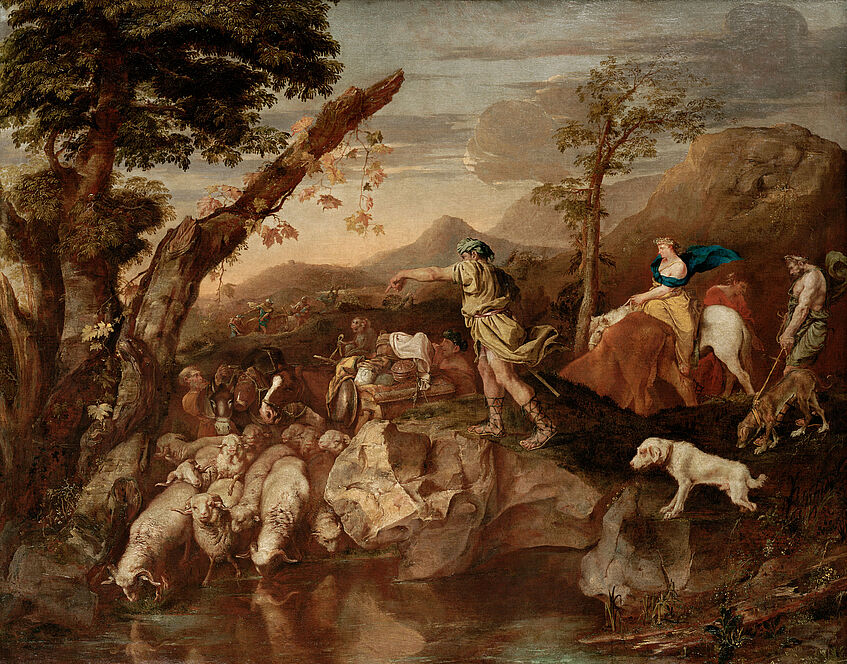Avisos de Viena 6 (2024)
Published 12 February 2024
Sabrina Grohsebner
Madre e hijo, sombra y luz.
La muerte de Raquel en el nacimiento de Benjamín según reescrituras de la temprana Edad Moderna
A child comes into the world as his mother takes her last breath. Benjamin's first cry coincides with his mother Raquel's final words. Early modern poets and hagiographers draw upon this 'dual event' from Judeo-Christian tradition.

John Michael Wright (1617-1694), Lady Katherine Dormer, The Rycote Estate, Oxfordshire
Marie-France Morel
Death in Childbirth.
History and Representations
Childbirth has long been likened to a battle, with women enduring pain and danger akin to soldiers in combat. This comparison, rooted in ancient times, persisted through the centuries, with women who died in childbirth honored like fallen warriors.

Causas de la mortalidad materna según los libros hagiográficos españoles de los siglos xvi y xvii (©Jesús M. Usunáriz)
Jesús M. Usunáriz
Milagros y partos peligrosos en las hagiografías de los siglos XVI y XVII
Una aproximación a las causas de la muerte materna en el Siglo de Oro español
Addressing maternal mortality during childbirth necessitates an analysis of two overlooked aspects in early modern Spain and Europe: the causes of maternal death and societal attitudes towards endangered birthing mothers. While existing studies provide insights into mortality rates, broader questions remain: What was the social status of endangered parturient women? What roles did midwives and medical professionals play? How are women depicted in historical accounts?

Comparación entre las cifras absolutas de muertes maternas por sepsis puerperal y por otras causas entre 1900 y 1972. Elaboración propia a través de los anuarios estadísticos del Instituto Nacional de Estadística, serie histórica.
Dolores Ruiz Berdún
«The women’s epidemic»
La mortalidad materna por fiebre puerperal en España en los siglos XIX y XX
Puerperal infection has long been one of the most dreaded consequences of childbirth, with a high likelihood of a fatal outcome. Even today, it's estimated that 10% of all maternal deaths globally result from puerperal infection.

Gemelos en detalle (Casa de Maternidad de Madrid, 1860-1861, 1880-1881, 1898-1899) | Elaboración propia basada en los registros de la Casa de Maternidad de Madrid (1860-1899)
Katharina Webinger
Gemelos en la Casa de Maternidad de Madrid (1860-1899)
Proporción y riesgo de muerte para los niños y las madres
Testimonies from the Maternity House provide a wealth of information about the experiences of mothers and infants in this public institution. Mothers could conceal their pregnancies and illegitimate births in this facility, where they were housed and cared for. One study focused on twins born in the Maternity House, analyzing records from 1860 to 1899.
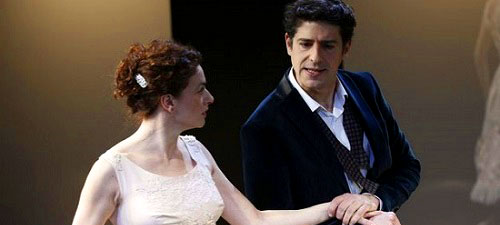
Escena de la obra "El pretendiente al revés dirigida" por Tirso Molina dirigido por José Maya
Fernando Sanz-Lázaro
Mueve la burra, mueve la princesa
Algunos sinónimos de abortar en textos literarios y documentos auriseculares
The text explores the semantic evolution and connotations of the terms abortar, malparir, and mover in Spanish. The progression from medical to figurative usage reflects societal attitudes towards childbirth, morality, and language.

Im Sterbebucheintrag der einjährigen Anacleta sind die Namen ihrer Eltern sowie der Tag der Bestattung zu lesen, festgehalten und unterzeichnet vom örtlichen Priester Toribio del Barrio. (Archivo Diocesano de Ávila, Parroquia de Pedro Bernardo: Libro de Párvulos Finados, años 1852-1865, No 30, S. 4, Eintrag 22 von 1852.)
Walburga Plunger
Ein Fenster in die Vergangenheit
Kirchenregister im Spanien des 19. Jahrhunderts und was sie uns zeigen
Research aiming to decode the past relies on those valuing present preservation. Early paintings and writings, sheltered from weather, endured millennia, offering insights into ancient lives.
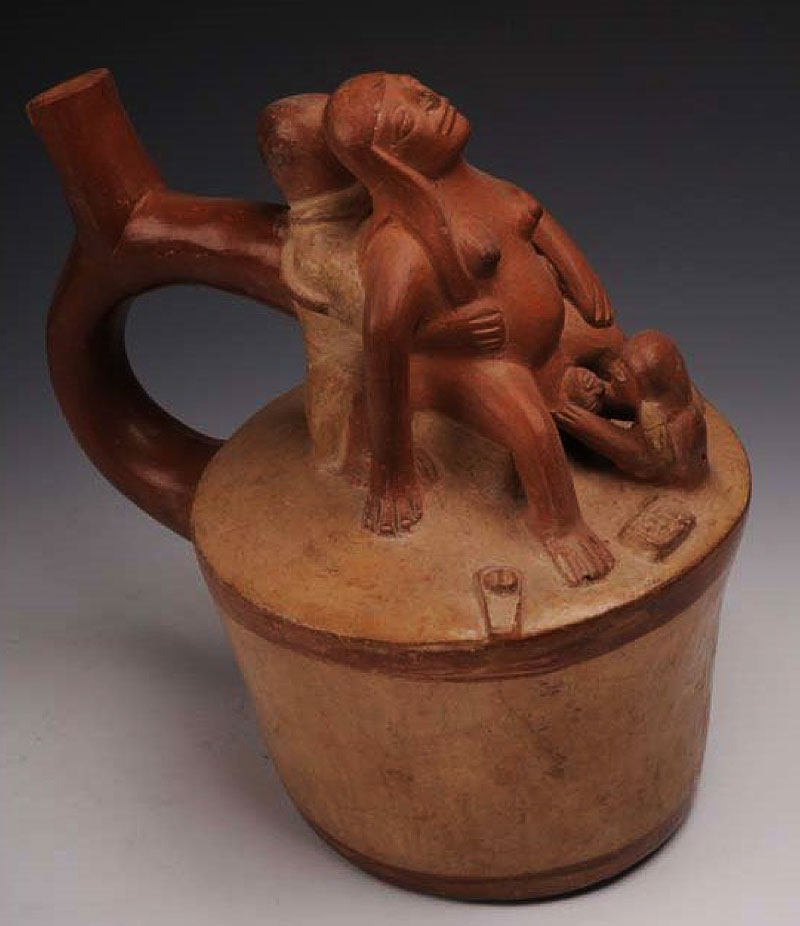
Mujer en trabajo de parto acompañada por dos parteras. Cultura Mochica, Época Auge (1-800 d.C.) © Museo Larco, Lima (Perú)
Carlos Varea
Bioculturales, desde el principio
Una aproximación evolutiva al parto humano
The study of human childbirth from the field of Biological Anthropology offers insights into the biocultural identity of our species. While reproduction is a biological process, its expression is shaped by cultural diversification across human groups, all aimed at ensuring maternal and offspring survival.
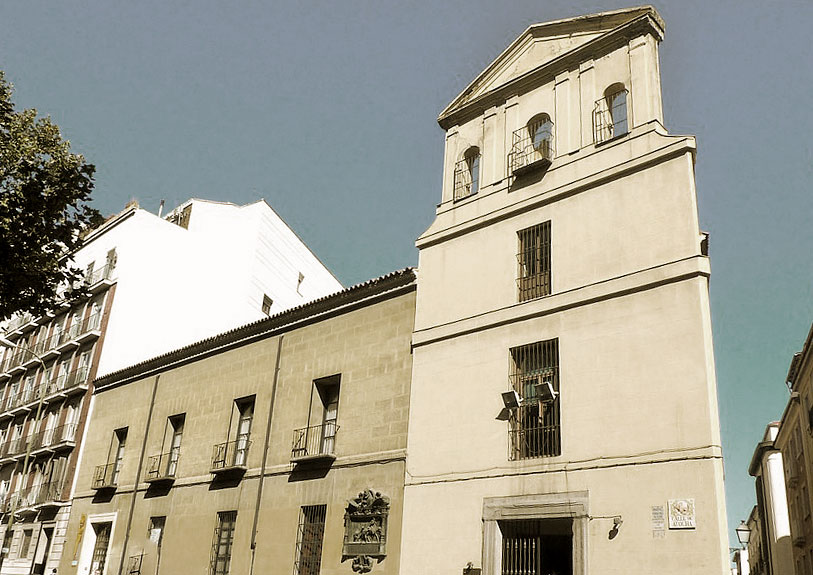
Hospital de incurables del Carmen en la calle Atocha
Wolfram Aichinger
¿Lo que más temían las mujeres?
Partos mortales y embarazos de riesgo en palacio y en casas de pobres (Siglo de Oro con incursiones contemporáneas)
Our vision of maternal death in childbed is conditioned by sources which foreground vicissitudes in the lives of aristocrats. Where testimonies deal with commoners, death seems to be much less frequent than could be expected. Possible reasons for this divergence between the spheres of the nobles and commoners will be discussed in this study.
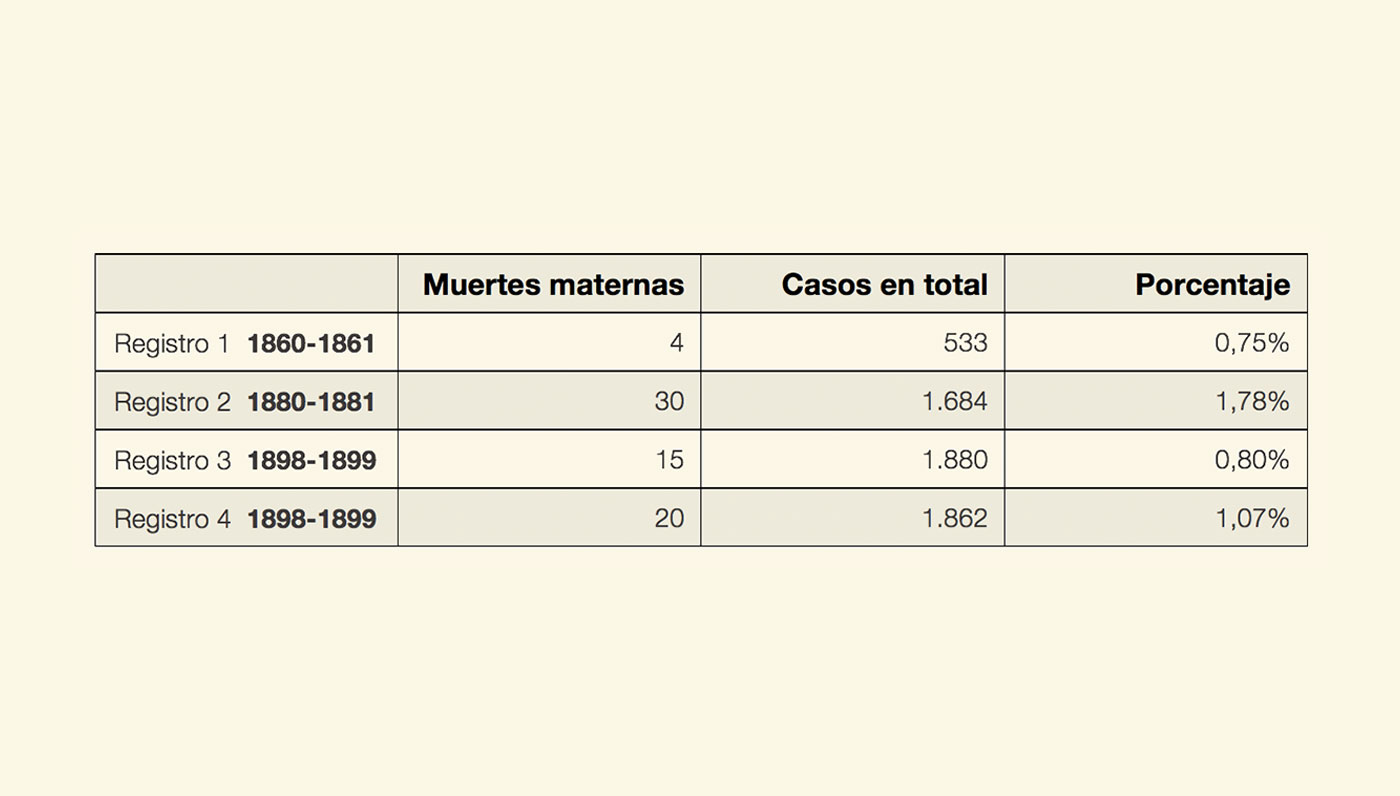
Elaboración propia basada en los registros de la casa de maternidad en Madrid, años 1860-1899
Sabine Köck
Mortalidad materna en la Casa de maternidad de Madrid entre 1860 y 1899
The Maternity House of Madrid, founded in 1837, provided a place for pregnant women to give birth anonymously. Many of them left their newborns in the care of the institution, which provided baptism, a wet nurse's milk, and shrouds for infants whose time on earth was often short.
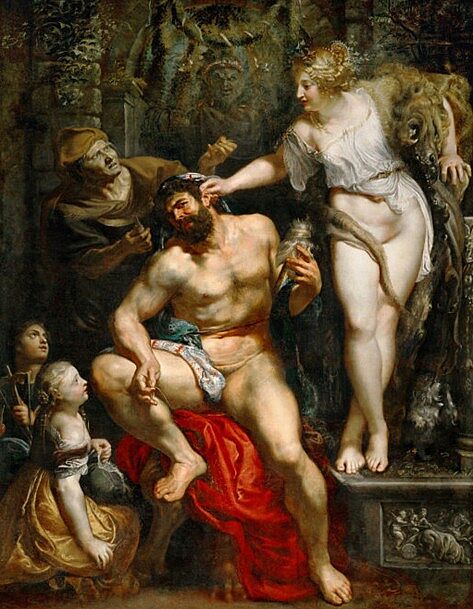
Peter Paul Rubens: Hercules and Omphale (1602-1605), Museo del Louvre, Paris
Rafael Beltrán
Tirón de orejas al héroe de su amante (Hércules y Ónfale en Rubens)
Ejemplos de amor, humor y pedagogía en un gesto de castigo insólito y transgresor
In Rubens' Hercules and Omphale (1602-1605), the queen of Lydia, Omphale, is depicted pulling the ear of Hercules, son of Jupiter and Alcmena, in an unusual and vulgar gesture. This act symbolizes her dominance over the legendary hero. The painting raises questions about power dynamics and gender roles in classical mythology.
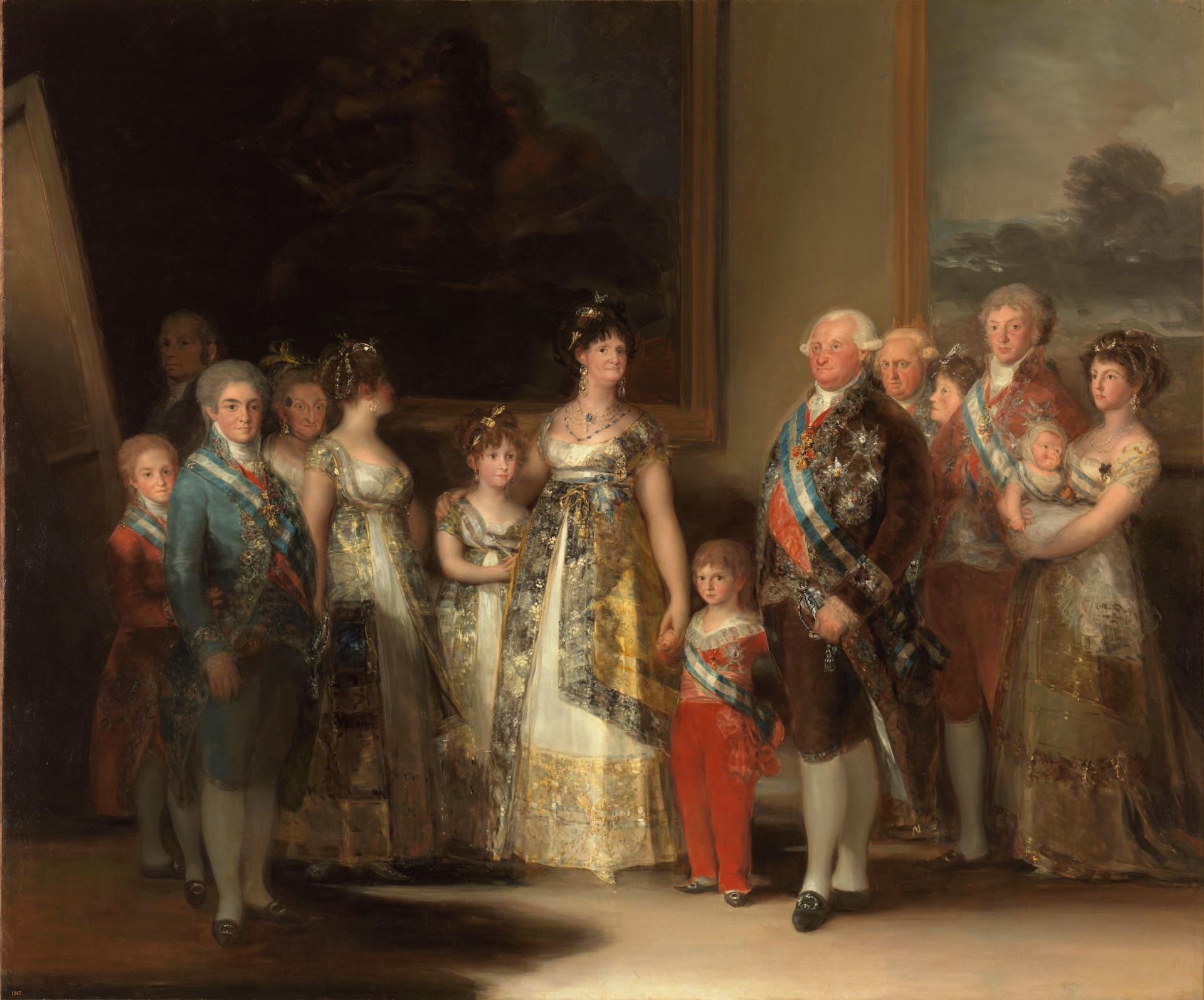
Francisco de Goya y Lucientes: "La reina María Luisa con sus hijos menores María Isabel y Francisco de Paula. La familia de Carlos IV", 1800, © Museo del Prado, Madrid
César Esponda de la Campa
La mirada de una abuela
Las relaciones afectivas y las ideas sobre la educación infantil en las cartas de María Luisa de Parma, reina de España, a la infanta María Luisa, reina de Etruria
María Luisa de Parma, queen of Spain, has been one of the most controversial figures in the history of the Hispanic Monarchy. Much negativity has been written about her, including her interference in politics, alleged promiscuity, her relationship with Prime Minister Manuel Godoy, and her relationship with her children. Despite this, evidence suggests she had a strong affection for her third daughter, the Infanta María Luisa.
Subscribe to our newsletter
Join us and our research!
Sign up and get notified of our new issues.

